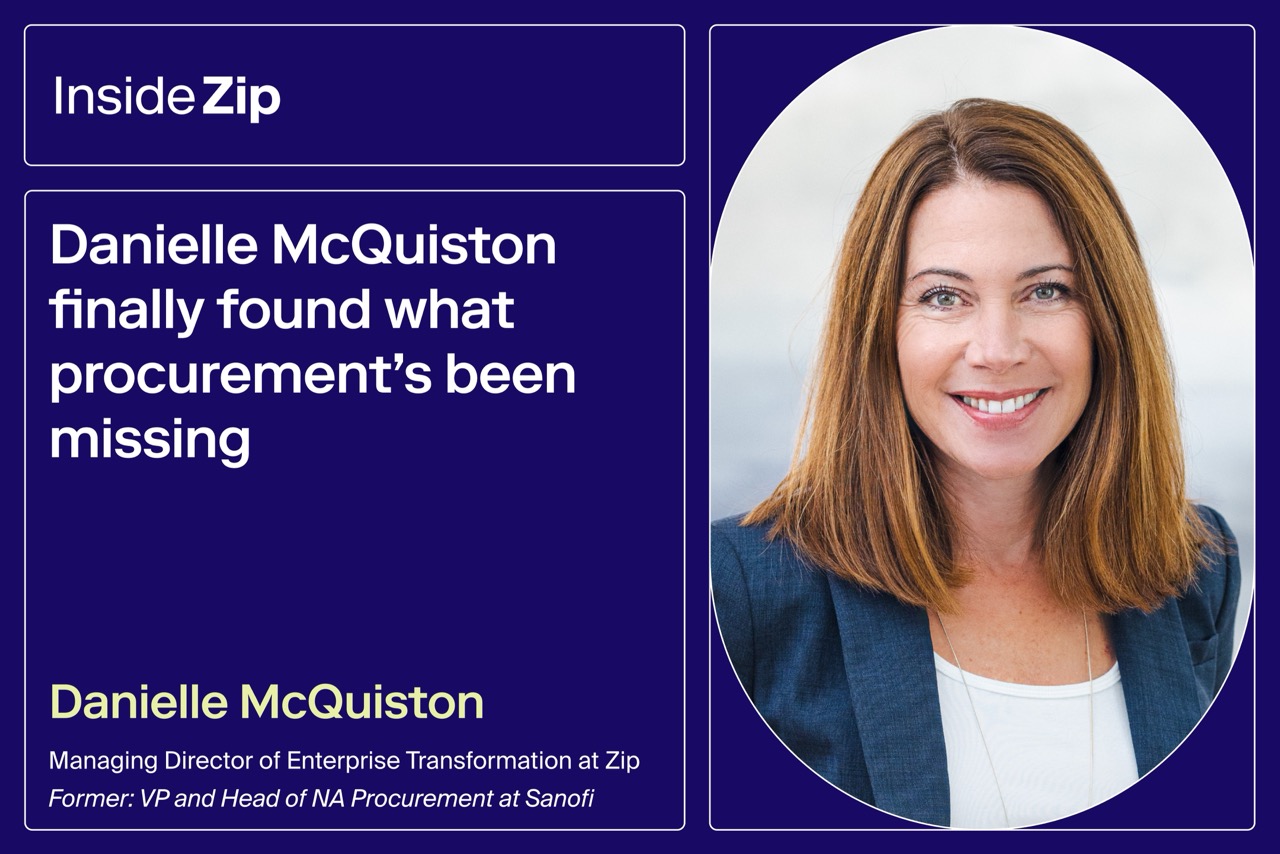
Centralized vs. Decentralized Procurement: Key difference?
Learn about procurement methods, key considerations, and automation trends.

A business has several functions, and everyone needs specific goods or services to get their job done. An organized purchasing process is required to obtain these items, subscriptions, or services that will help people increase output and meet organizational goals.
Depending on your business model, there are several approaches to purchasing. The two most common are called centralized and decentralized procurement.
In this article, we’ll define each method, examine the pros and cons, explore critical considerations, and discuss automation as the future of procurement.
What Is Centralized Procurement?
When procurement is centralized, all goods and services for the business are purchased at the top level. Decisions are made through a single, dedicated organization by a designated regional or divisional representative. The basic idea is that the authority to make purchasing decisions is centralized.
Due to the universal nature of centralized purchasing, staff typically has access to a larger number of resources. This can include document approval software, procurement management, tax compliance, automated vendor onboarding, and intelligent intake forms.
Example of Centralized Procurement
If a business decides to standardize its janitorial services across ten different locations, this can be done through centralized procurement. The procurement team scopes out the project and approaches the market. They will evaluate suppliers, attempt to negotiate volume discounts, and award the contract to a single supplier.
This approach means SMEs at different locations may miss out on consideration. It also implements a one-size-fits-all solution, even when different offices have varying janitorial needs.
Advantages of Centralized Procurement
Centralized procurement leads to better management of spend and benefits of scale. There’s a specialized and dedicated team for purchasing, with centralized oversight of data and information. Additionally, a higher purchasing volume equates to bigger and better discounts.
This type of procurement allows for more control over a standardized purchasing process, which minimizes maverick spend. It improves compliance and business relationships with one point of contact for key suppliers, and simplifies inventory management.
Centralized procurement mitigates risk with the universal management of environmental, sustainability, and governance agenda. It also allows for the implementation of holistic category tactics and strategies.
Other benefits include:
- Greater transparency for more accurate spend analysis
- Straightforward commodity price tracking
- Less time is spent researching and negotiating suppliers
- Allows for tail spend auditing to prevent savings leakage
- One location for purchase orders, invoices, and reporting
Regarding centralized purchasing, procurement specialists are responsible for the buying. This provides an opportunity to implement strategic sourcing for all locations.
Disadvantages of Centralized Procurement
Centralized procurement means longer delivery and turnaround times, with workloads that can cause delays and bottlenecks. As an operation grows, this type of procurement may become too complex and costly to run. It can also result in the late delivery of goods and services to end users.
Additional disadvantages are:
- A one-size-fits-all solution won’t meet the unique needs of each location
- There may be a misunderstanding of local requirements
- It allows for maverick buying outside of contracts
- Regional and unit managers will have less autonomy, causing frustration
- Inability to leverage local discounts, which impacts supplier diversity
What is Decentralized Procurement?
When procurement is a fully decentralized process, each business unit (function or location) is responsible for its own purchases. This means that the larger the business, the more spread out procurement becomes across locations, and even countries.
However, sometimes it’s a matter of practicality. For example, it may not be realistic to direct all purchases through a single office. Although some advantages of a central model are lost, supplier diversity and the development of small/medium enterprises are better enabled.
When it comes to decentralized procurement, decisions can be made more quickly to benefit from things like seasonal discounts, and to avoid challenges like stock-outs. This means maintaining local business relationships is more cost-effective.
Example of Decentralized Procurement
In decentralized purchasing, decision-making is much quicker. Purchases are curated by a manager onsite as opposed to a central HQ. These managers have the authority to purchase items based on that location's needs.
For example, a popular clothing brand uses decentralized procurement to best meet the needs of the business. That means the supervisor doesn't need to go up a chain of command for approval whenever the office runs out of pens and paper. They do not need to put in a purchase request to a central office. They simply make the call and fulfill the immediate need.
Advantages of Decentralized Procurement
Decentralized procurement allows for a greater diversity of suppliers and local alternatives. It involves faster decision-making, shorter delivery times, and fewer bottlenecks.
Other advantages include the following:
- Fewer bottlenecks and shorter turnaround times
- Good fit for local requirements
- Beneficial for specialization with local knowledge
- Increased engagement among decentralized teams
- More interpersonal relationships and profound supplier knowledge
Disadvantages of Decentralized Procurement:
Decentralized procurement structures need better adherence to corporate policy, and teams are unable to share best practices with other units. Everything is compartmentalized, and overall costs are likely higher than centralized purchasing. There is scattered management of data and category strategy execution.
Regarding decentralized purchasing, a business is missing out on the benefits of scale, like volume discounts. There is a duplication of efforts in contract and vendor management, with suboptimal management of spend and an increase in overall suppliers.
Additional disadvantages are:
- Invisible and siloed spend data
- Risk mitigation is not always fully supported
- More workload, more RFPs, more contracts
- Multiple contact points for suppliers
- Higher risk exposure
Considerations for Centralized vs. Decentralized Procurement
60-70% of procurement teams are now focused on strategic pursuits, but there is no hard and fast rule for deciding which procurement system to use.
Here are a few points to consider before choosing between centralized and decentralized procurement:
- The nature of materials used (like heavy, bulky, fragile, etc.)
- The distance between storage and the production center
- The cost of transport
- Company policy concerning materials purchased
For example, in manufacturing, key considerations will include plant location. Centralized purchase is more suitable when one or more production centers are closely located. It's also favorable when the plant uses one basic raw material or production center to manufacture standard products.
Decentralized purchase is more suitable when production centers are distant and when the plants for manufacturing different products, produce other raw materials.
Deciding on a Procurement Structure
When deciding on a procurement structure, there isn't a one-size-fits-all approach. The number of employees, industry, growth rate, location, and categories under management are all factors that will affect if a centralized or decentralized structure is sufficient.
Whether or not a business adopts a decentralized or centralized procurement model isn't just a matter of personal preference. There are foundational factors that will determine which model is suitable. In some cases, it may be a combination of both methods.
Shifting Procurement Organization Models
How do you decide on the best procurement structure for your business? As an organization matures, they tend to prefer a more centralized method of buying. Thus, an era of centralizing takes place. However, no model can sustain unexpected benefits indefinitely.
The advantages of any given procurement operating model will erode over time and become more challenging to achieve. For example, companies may grow too complex to manage purchasing centrally, or the business model may require a more localized approach to sourcing and supplier selection.
Sometimes, a structural change is needed to enable procurement to deliver value in new avenues, allowing the benefits to be sustained, or even improved. Procurement must always be aligned with broader strategic objectives and the company's culture to deliver value.
Hybrid Center-led Model
According to KPMG research, many companies are using more center-led structures as a hybrid solution to procurement. Since procurement organization models are rapidly changing, most organizations face the development curve with a flexible system, which still allows them to secure governance and risk management.
A hybrid model incorporates the best features of both centralized and decentralized procurement, and is the most suitable choice for achieving speed, efficiency, and cost savings.
A center-led structure centralizes all strategic aspects of procurement and sourcing, while leaving the tactical buying to individual business units.
Center of Excellence
The procurement Center of Excellence (COE) is at the core of a hybrid model. The COE team is a set of strategic policymakers, sourcing professionals, project managers, and experts who develop the framework for all procurement activities within the organization.
The Center of Excellence within a business identifies strategic categories that might benefit from a centralized approach, which leverages the entire spend of the organization. The COE must also develop processes around non-strategic categories that are best left to localized markets and subject matter experts with each individual unit.
When you have a designated Center of Excellence, best practices can easily be shared throughout the organization. The group will also significantly reduce maverick buying and maintain performance on a consistent level.
Additionally, a myriad of studies indicates that companies with center-led procurement strategies considerably outperform their non-center-led counterparts in supply cost reductions and spend under management.
Automating the Procurement Process
No matter what procurement process you choose, automation will maximize workflow efficiency and reduce the time required to get things done. Automating procurement processes speeds up buying and frees skilled staff from repetitive and time-intensive tasks.
Automation comes in many forms, including robotic process automation (RPA), which according to studies, over 50% of high-performing procurement teams have begun testing for themselves.
What are some of the top processes procurement teams automate?
- Purchase requisition
- Purchase Order
- Invoice Management
- Vendor Management
- Contract Approval
Automating procurement and the processes above provide many advantages for a business, regardless of whether they choose centralized or decentralized procurement. Some of the benefits you can look forward to are:
- Increases productivity
- Eliminates manual errors
- Provides visibility into your spend
- Acts as a central repository
- Removes approval bottlenecks
Automating procurement will also improve collaboration between internal and external teams.
Procurement Automation Software
The best way to automate tasks is through procurement automation software. There is no stopping the rise in these tools either. By 2028, the global procurement software market will be worth $9.5 billion.
Procurement automation software lets a procurement team focus on critical business activities like strategizing and decision-making, while the robot does the rest.
It empowers dispersed and decentralized teams to easily purchase the goods/services they need to be effective, while system-configured internal controls ensure centralized management and compliance with procurement policies.
Software for procurement automation enhances productivity and creates an accountable and informed spending culture. As a result, procurement leaders can rest easy knowing all expenditure is approved, within budget, auditable, and compliant with policies.
It allows for the centralization of records, visibility, and reporting capabilities, enabling purchasing consolidation and producing opportunities to negotiate discounts or more favorable terms.
If you're looking for a platform to start with, Zip can help. It automatically routes requests to finance, data, IT, security, legal, and other teams based on triggers (like the type of purchase, cost center, etc.).
The Zip system enables more spend visibility, easier budget management, and a clever audit trail. Parallel-track as many reviews as possible and make live changes to any workflow in progress. Using tools like Zip to automate procurement leads to increased compliance, reduced duplicative spend, and shorter cycle times.
Summing it Up
Centralized procurement happens from the top down, while decentralized tends to occur as needed. Both methods have pros and cons, and each can prove more suitable depending on your industry, company size, location, and other factors.
The answer to a successful procurement program is automation. Yet, 83% of procurement professionals surveyed said that less than 50% of their procurement processes are automated.
Procurement needs a fresh, forward-thinking perspective that maximizes third-party relationships and drives innovation. Success is often achieved with a hybrid procurement model that uses centralized and decentralized strategies depending on specific business needs.
Regardless of which model you choose, the ultimate goal should be to effectively manage all purchasing processes in a manner that improves compliance, productivity, profitability, and spend control.
Ready to get started with a procurement automation solution today? Request a personalized demo today!

Maximize the ROI of your business spend

Enter your business email to keep reading



























.webp)



















.avif)













.avif)










.webp)





.avif)












.avif)
